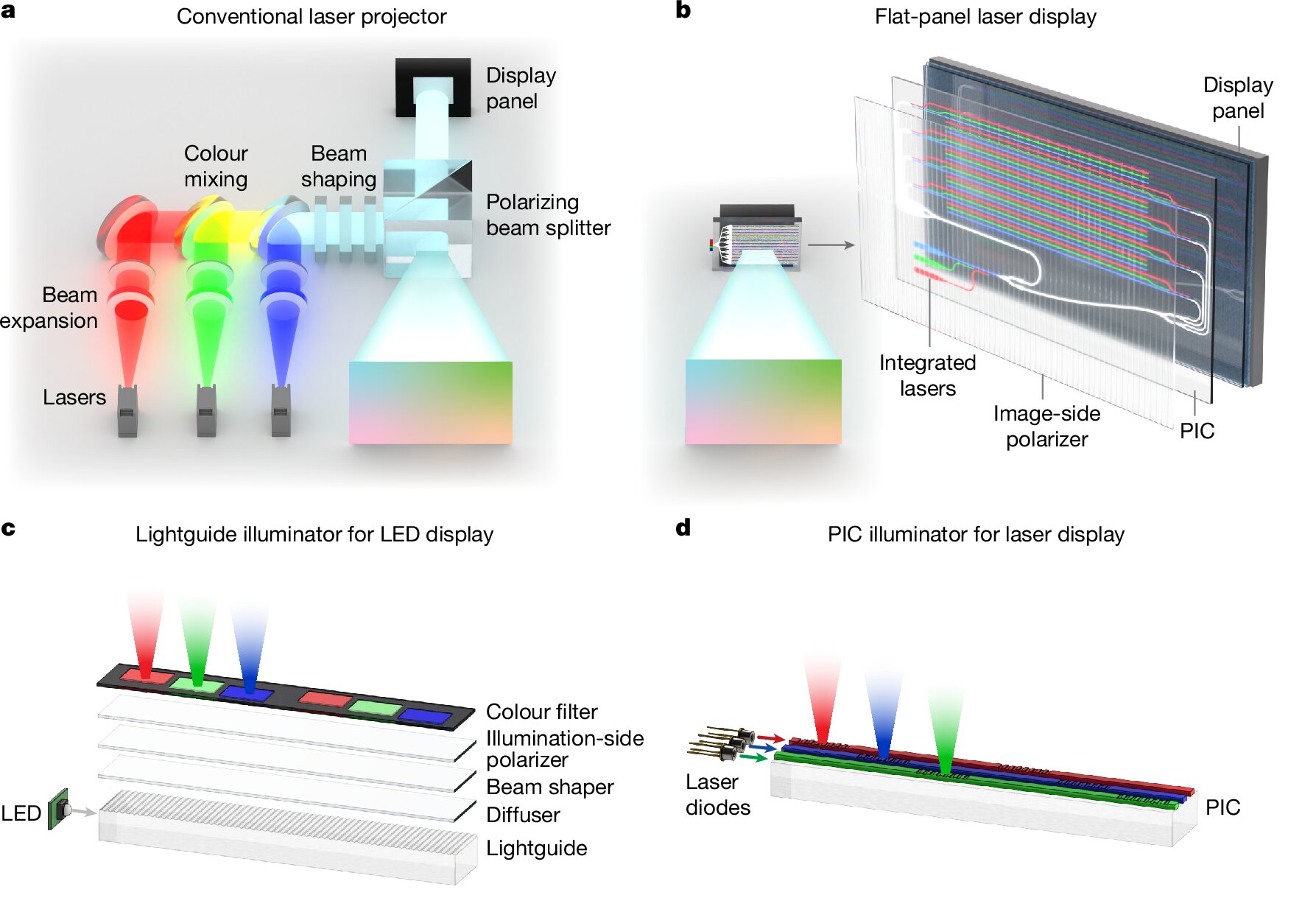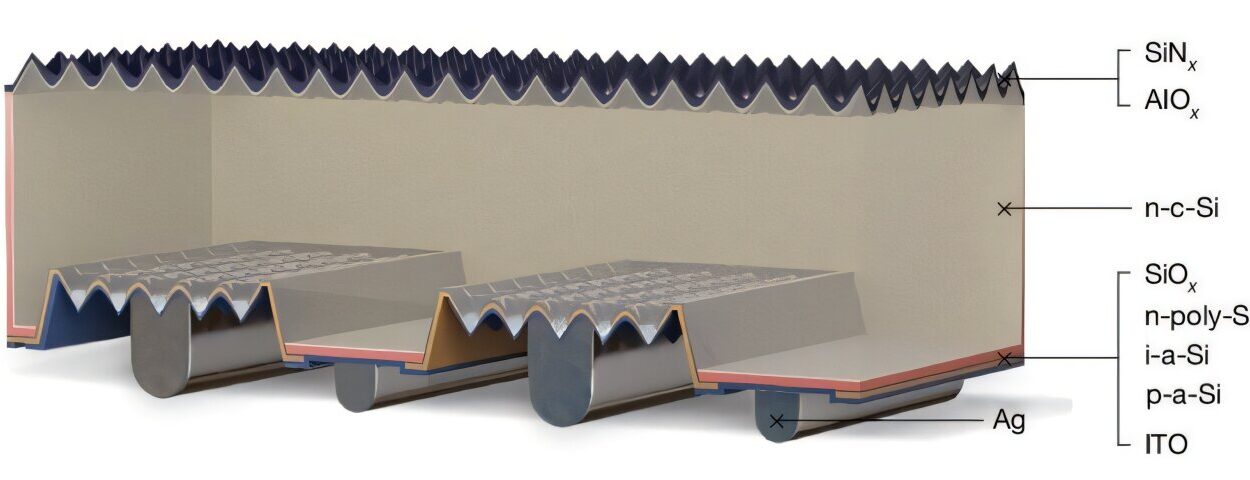Imagine holding a smartphone, tablet, or even a television screen that is thinner than a pencil. Now imagine that same screen producing brighter, sharper, and more vivid images than anything currently available. This vision is closer to reality thanks to a groundbreaking development from Meta: a flat, ultra-thin panel laser display that could transform not just our gadgets, but also the way we experience augmented reality.
Flat-panel displays, especially those using LED technology, are everywhere. They light up our smartphones, laptops, TVs, and monitors. Yet, for all their ubiquity, traditional displays face physical limitations. Current LED systems rely on bulky components to generate bright images, which adds weight and consumes more power. Lasers have long promised a solution: higher brightness, richer colors, and the potential for smaller, more energy-efficient devices. But there has always been a catch.
Overcoming the Challenges of Laser Displays
The primary hurdle in creating a flat-panel laser display has been the need for large, complex optical systems. Previous attempts either required intricate setups or were impractical to manufacture at scale. Laser displays often ended up thicker than conventional displays, undermining one of their greatest potential advantages: slimness.
Meta’s innovation tackles this challenge head-on. After three years of meticulous research, the team has developed a method to build a truly flat and ultra-thin laser display. The secret lies in a centimeter-scale photonic integrated circuit—a sophisticated chip that combines thousands of optical components. By integrating this tiny chip with a 5-by-5-millimeter liquid-crystal-on-silicon (LCoS) panel, Meta has achieved a display that is one-eightieth the thickness of conventional LCoS screens. The result is a device capable of producing vibrant images with a remarkably wide color range, all while eliminating the bulk of traditional laser setups.
How It Works
At the heart of the breakthrough is the photonic chip, which handles the complex task of controlling laser light in a highly compact space. Conventional displays use separate lenses, mirrors, and waveguides to direct light, making them heavy and inefficient. Meta’s approach integrates these functions onto a single chip, creating a streamlined system that can deliver high-resolution, bright images in an ultra-thin form factor.
The combination with the LCoS panel allows the device to manipulate light in precise ways, creating images that are not only sharper but also more immersive. The integration of nanophotonics—the science of controlling light at extremely small scales—with display technology opens the door to a host of new possibilities, from thinner TVs to immersive augmented reality experiences.
Remaining Challenges
Despite the breakthrough, the technology is not yet perfect. One limitation is laser speckle, a grainy effect that can appear in laser-generated images. Additionally, the current system can only turn the display light on or off as a whole, rather than adjusting individual parts of an image. This limitation can lead to wasted power when displaying simple content, such as text or small icons, because the entire screen consumes energy even if only a tiny portion is active.
Researchers are actively exploring solutions to these challenges, and incremental improvements could make the display even more efficient and versatile in the coming years.
A Future of Immersive Experiences
The potential applications of Meta’s ultra-thin laser display are staggering. One of the most exciting prospects is the development of lightweight, immersive augmented reality (AR) glasses. The Meta team has already created a prototype see-through AR system that blends virtual images seamlessly with real-world environments. Imagine walking through your office or home and seeing digital information overlaid on physical objects—directions, notifications, or even 3D holographic content—without bulky headgear weighing you down.
Beyond AR, these displays could dramatically improve conventional devices. Smartphones, tablets, and televisions could become thinner and lighter while delivering richer, more vibrant images. The energy efficiency of laser displays could also extend battery life, making portable devices more practical for daily use.
A Step Toward the Future
Meta’s ultra-thin laser display represents more than just an incremental improvement in screen technology. It is a glimpse into a future where displays are lighter, brighter, and more integrated into our lives than ever before. By harnessing the power of nanophotonics and laser technology, the company has opened the door to innovations that could redefine how we interact with both digital and physical worlds.
As the technology matures and challenges like laser speckle and selective brightness control are addressed, the possibilities become even more tantalizing. From AR glasses that feel like ordinary eyewear to televisions and monitors that redefine visual quality, the era of ultra-thin laser displays is poised to reshape the way we see and experience the world.
Meta’s work is a reminder that even in a world filled with screens, innovation never stops. Sometimes, it takes a bold vision and years of meticulous research to turn a seemingly impossible idea into reality. And when it does, it doesn’t just improve a device—it changes the way we see the world.
More information: Zhujun Shi et al, Flat-panel laser displays through large-scale photonic integrated circuits, Nature (2025). DOI: 10.1038/s41586-025-09107-7





